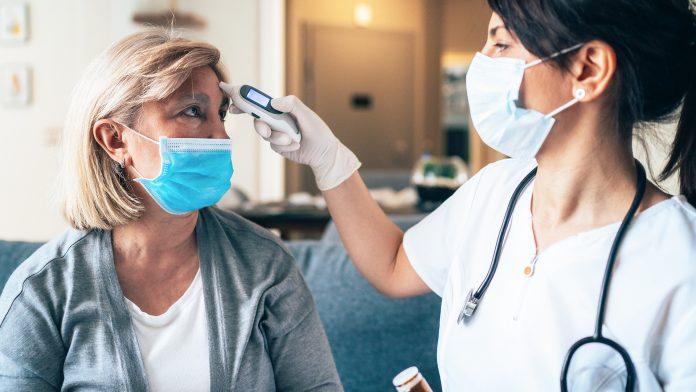
Early symptoms of the COVID-19 infection vary depending on factors such as age and gender, new research using machine learning has found.
A study led by King’s College London observed that the most notable difference in early symptoms was between younger age groups (16-59 years) compared to older age groups (60-80 years). Early symptoms also varied between men and women.
The findings have been published in the Lancet Digital Health.
Researchers analysed data from the ZOE COVID Symptom Study app from 20 April to 15 October 2020. As part of a joint initiative with the Department of Health and Social Care, app users are invited to get tested as soon as they report any new symptoms. The research team modelled the early signs of COVID-19 infection and successfully detected 80% of cases when using three days of self-reported symptoms.
Machine learning
The study compared the ability to predict early signs of COVID-19 infection using current National Health Service UK diagnostic criteria and a Hierarchical Gaussian Process model – a type of machine learning. The machine learning model was able to highlight some characteristics about the person affected, such as age, sex, and health conditions, and revealed that early COVID-19 symptoms are different among various groups.
The researchers identified and examined 18 symptoms, which had different relevance for early detection in different groups. The key symptoms for earliest detection of COVID-19 overall included loss of smell, chest pain, persistent cough, abdominal pain, blisters on the feet, eye soreness and unusual muscle pain. However, loss of smell lost was not as significant in people over 60 years of age and was not relevant for subjects over the age of 80. Other early symptoms, such as diarrhoea, were common in older age groups (60-79 and over 80). Fever, while a known symptom of disease, was not an early feature of the disease in any age group.
Gender differences
The findings showed that men were more likely to report shortness of breath, fatigue, chills, and shivers, whereas women were more likely to report loss of smell, chest pain, and a persistent cough.
While these models were generated in the COVID Symptom study app, models were replicated across time suggesting they would also apply to non-app contributors. Although the models were used on the first strain of the virus and Alpha variants, researchers suggest the symptoms of the Delta variant and subsequent variants will also differ across population groups.
Lead author, Claire Steves, Reader at King’s College London, said: “It is important people know the earliest symptoms are wide-ranging and may look different for each member of a family or household. Testing guidance could be updated to enable cases to be picked up earlier, especially in the face of new variants which are highly transmissible. This could include using widely available lateral flow tests for people with any of these non-core symptoms.”
Dr Liane dos Santos Canas, first author from King’s College London, said: “Currently, in the UK, only a few symptoms are used to recommend self-isolation and further testing. Using a larger number of symptoms and only after a few days of being unwell, using AI, we can better detect COVID-19 positive cases. We hope such a method is used to encourage more people to get tested as early as possible to minimise the risk of spread.”
Dr Marc Modat, Senior Lecturer at King’s College London, said: “As part of our study, we have been able to identify that the profile of symptoms due to COVID-19 differs from one group to another. This suggests that the criteria to encourage people to get tested should be personalised using individuals’ information, such as age. Alternatively, a larger set of symptoms could be considered, so the different manifestations of the disease across different groups are taken into account.”






















